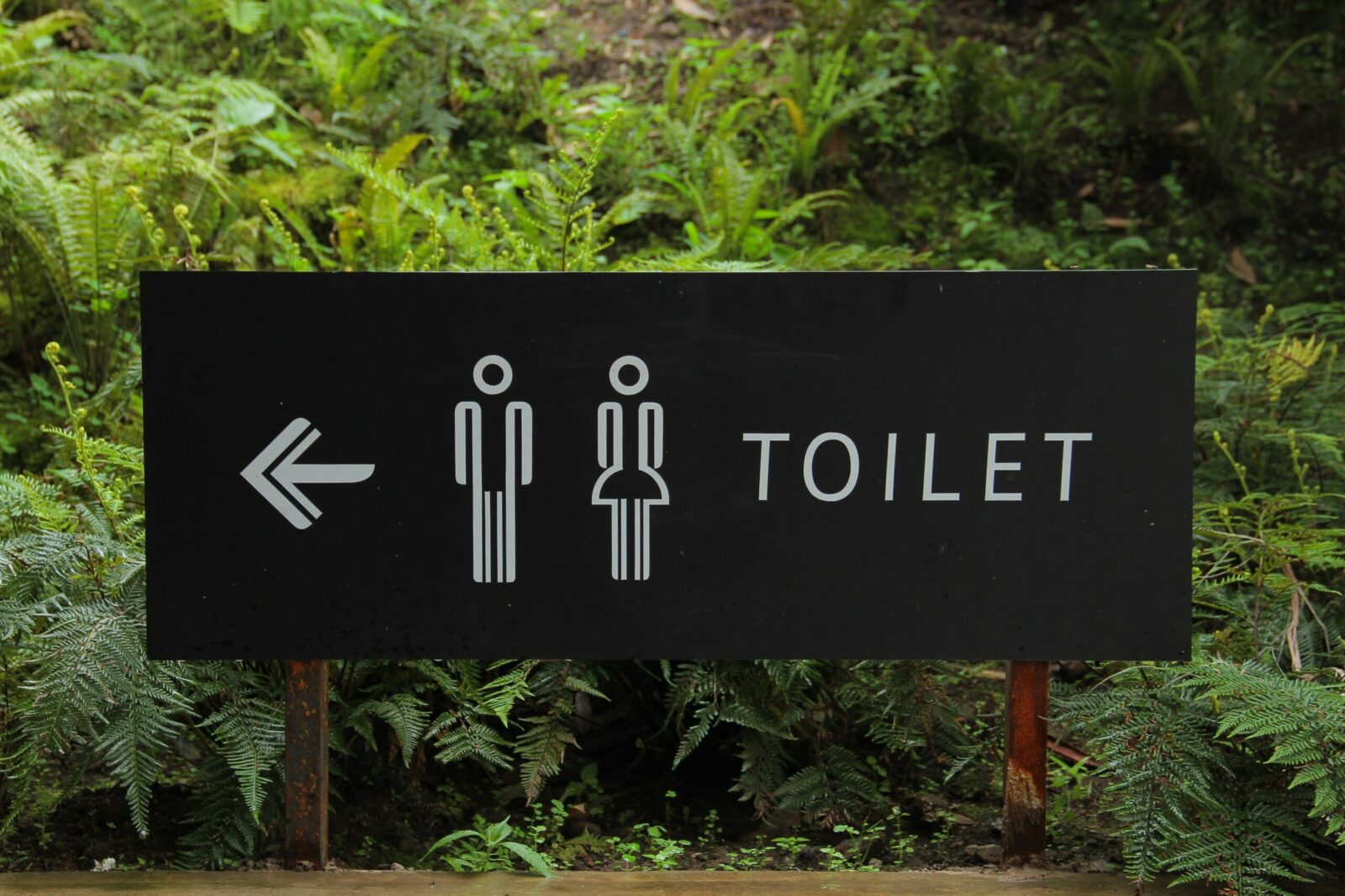Are you encountering lower back pain and hip pain? Or maybe your back hurts while you’re just walking? Don’t wait and hope that surgery will solve all of your problems. Start exercising now.

Importance of posture
Because of our sedentary life, our posture suffers severely! An extended period we spend in a sitting position causes gluteus maximus, gluteus medius, and minimus to get deprived of activities and start getting weaker. Because of that, our gluteal muscles lose their function and strength!
Inactivity results in delayed activation of buttocks muscles, and because of that, our back takes over. Our lower back isn’t supposed to carry us all day around, so they become stiff, and eventually, there creeps up back pain.
You see, our butts should be firm and endurable, but instead, they are weak and very easily fatigued. If you want to know how to improve them, you can watch my video on YouTube with some great exercises:
Another thing we should be careful about is how we stand throughout the day, how we pick up items, or how we carry ourselves all together. We NEED to have our spine in a neutral position.
Why we need a spine in a neutral position?
Because when the vertebrae are in a neutral position, it is at its prime, taking tasks and carrying loads at max efficiency. One misalignment and we can welcome our pain again. Be mindful about your posture trough the day, and you just might do wonders and even prevent future operations on one of your discs. This mindfulness won’t only affect your back but your hip pain as well.

Weak abdominal muscles
if you never did a crunch, you just might be saving yourself from further pain in your lower back.
Why are sit-ups bad?
They put pressure on our lower back, and instead of training abs, they load our hips, which are usually very tight because of sitting in our chair or sofa for an extended period of time.
What should you do to empower your abs and get rid of back pain?
Instead of the regular crunch, you can do just body lifts off the ground to a 30-degree angle with no activation in hip flexors (psoas major, rectus femoris, and sartorius muscles). Hold your position at the top, and come back down slowly.
Another thing is stability drills, which include all kinds of planks or holds in any sort of position, side, or front.
If you are lost, you can also check my another video about training abdominal muscles:
Lower back pain while walking
Your walk should be your therapy and not your enemy! But why does it come to issues while walking? The first thing is the reduced mobility of the hips and tightness. The only thing that can help with tightness is stretching and strengthening the opposite muscles; gluteus muscles! Pain while walking can also happen if you have a rigid upper back, and you are not swinging with your arms.
So how should I walk?
First of all, engage your core by tightening your belly button. Start swinging your arms and walk faster than you usually do. This action will take the load of the spine and make it pain-free.
Lower back pain and hip pain
Another issue is hip flexors, which become tight after staying in position, where our hips stay at a 90-degree angle for an extended period (sitting).
Why does my hip hurt?
There are several reasons why your hip joint and muscles around are out of balance.
- It can be osteoarthritis; brittle bones with old age can also cause hip fractures.
- Tendinitis, which is inflammation or irritation of the tendons because of overuse or overtraining; muscles around the hip joint themselves can also get painful because of overtraining or overloading the joint.
Recovery is significant, and without rest, there can be no success.
Our hip flexors are the engine through which our body moves. They control balance, our ability to sit, stand, twist, reach, bend, walk, and step.
Everything goes through the hips.
And when our hip flexors tighten, it causes a lot of problems in ordinarily healthy and active people, like us. That can cause immense hip pain along the side of lower back pain. The primary hip flexor is the psoas major, which is the only muscle in the human body connecting the upper body to the lower body.
How to solve tight hip flexors
Knowing you have tight hip flexors is one thing. How to solve it is another thing. Simple static stretches just won’t cut it. You need to start thinking about more dynamic stretching, mobility exercises, fascia stretching, and, most important, muscle activation movements!
Kidney back pain
A lot of people get mislead about what is kidney pain or lower back pain. It can be very difficult to distinguish. Back pain is usually located in L4 to L5 / L5 to S1 of the vertebrae. Those segments of the spine are the most flexible and because of that, they get a lot of injuries. But kidney pain is usually deeper and a bit higher, located under the ribs.
The most common symptoms are:
- nausea
- difficulty urinating
- fever
- vomiting
Conclusion
At the end of the day, you need to be calm about your lower back pain and start taking action. Sometimes everything we need is rest and usually, that is the answer. Simple exercises won’t hurt either. If you encountered lower back pain or kidney back pain, you should always visit a doctor.


Hi there,
I appreciate the effort to put all the information in a great article. Well done written.
In my profession, I have many “students” which suffer of lower back pain. That is why I always recommend getting out there and put the body in action, to strengthen the abdominals and glutes, to be mindful of their body posture.
When you have lower back pain, the intention is to stay more in bed. Which I do not recommend. It will make the things much worse.
Thanks for sharing.
You are very much welcome =).
Hello there! Thank you very much for sharing this exercises here in this article, it will help me alot. I worked as a secretary to the general manager of a company for two years, I had to stop few months back due to the fact that I was developing a weak abdominal muscles which is still affecting me now.
I just hope these exercises is helpful to me.
All that is required is to be consistent with exercises that do not cause you pain. From there it builds on. This will give you the best result. Exercises will definitely help you.
Your premise that “if your posture sucks, your back sucks”, is spot on. My own experience is an example. Most of my life I paid little attention to my bad posture until I had a herniated disc. I made a recovery without surgery and have been working on my posture, and now 29 years later, at age 80, my posture is the best of my adult life.
The first thing I did was to never do any form of sit up. However, I do not understand what you mean by “body lifts off the ground to a 30-degree angle”. Is it what your picture below that section is showing? I believe you need to make your explanations a little bit more elementary, so people like me can better understand.
I hope I have been clear and that I may have helped.
I am sorry to hear that. Nobody should go through a herniated disc, but unfortunately, as you said, we have no focus on our posture. I’m glad your lower back is healthy again, at the age of 80! impressive.
Yes, I need to elaborate on that. Body lifts are just simple ab exercise, where you don’t include your hip flexors, which you usually activate with the classic sit-ups. Why should you avoid that? because most of us have tight hip flexors to begin with, which causes imbalances in the lower back and eventually lower back pain.
And why go to only a 30-degree angle? Because the whole purpose of the exercise is to strengthen your abs, and when you go above 30 degrees, there is no more activation in rectus abdominis and a lot more on your hip flexors, such as psoas major.
I hope that clears up a bit.
As a fitness specialist who’s trained all body types and age ranges over the years and I agree with you if your posture sucks your back sucks!
I’m glad my military father never let me slouch and, I’m even more grateful for my first Kung Fu sifu that drilled core strength into me. I also observed, before I ever began teaching, that people’s posture would correct when they strengthed their core.
I loved your walking advice too. Same with planks, if you concentrate your belly button in towards your spine, your spine naturally lengthens and aligns properly.
One of my old professors used to joke about the people who walked at a slow pace, chatting and hunched over pretending they were doing a workout (she is old school and pretty harsh sometimes but, I love her.) She, like you, re not wrong. If you engage your core and your arms while you walk, you’re going to see real benefits!
I could not agree more and thank you for your comment!
Hello , thanks for the owesome review. Truly I have found it very helpful to me.
You have posted about lower back pain. You have also mentioned about importance of posture, lower back pain and hip joint. There are various kind of pain. It differs from person to person. For the healthier and happier life we should maintain our health. Healthy body keeps us fit for daily work. Thank you again for the post. It is really helpful review. I have shared it with my friends.
I’m glad you liked it and i hope you found something usefull =).
Thank you for sharing!